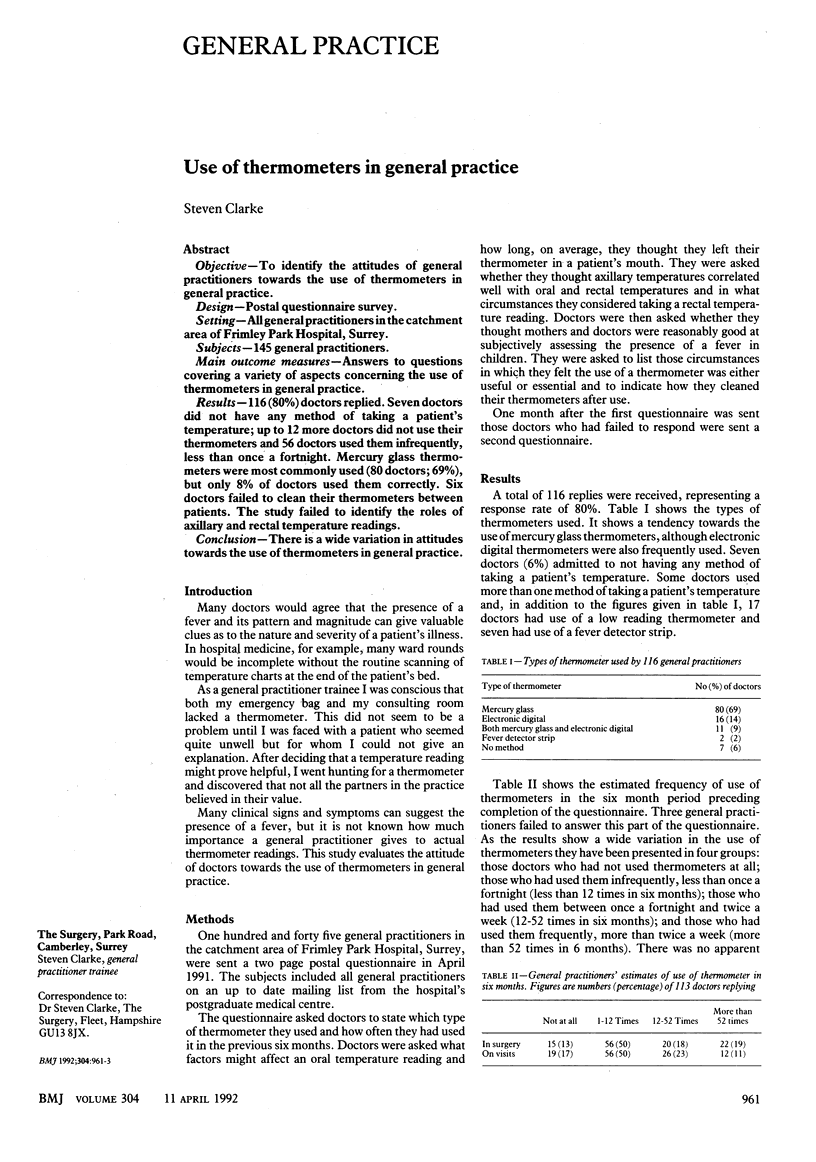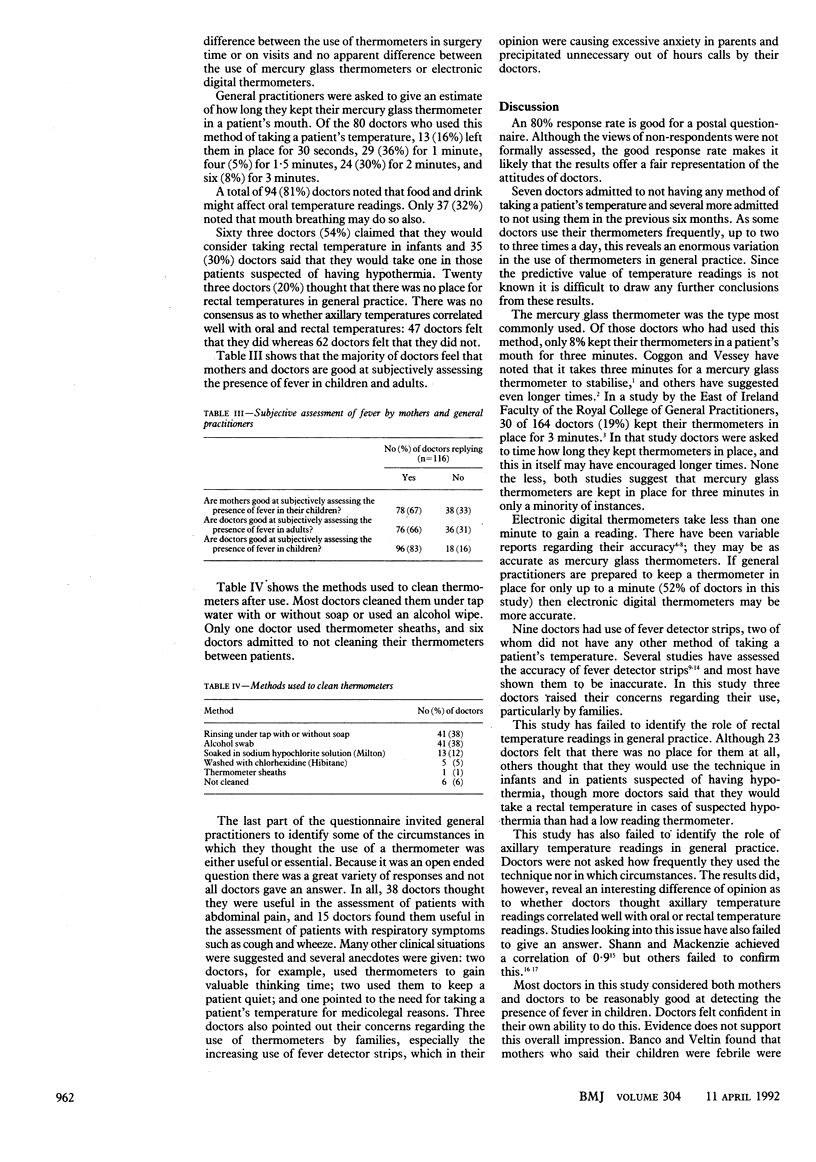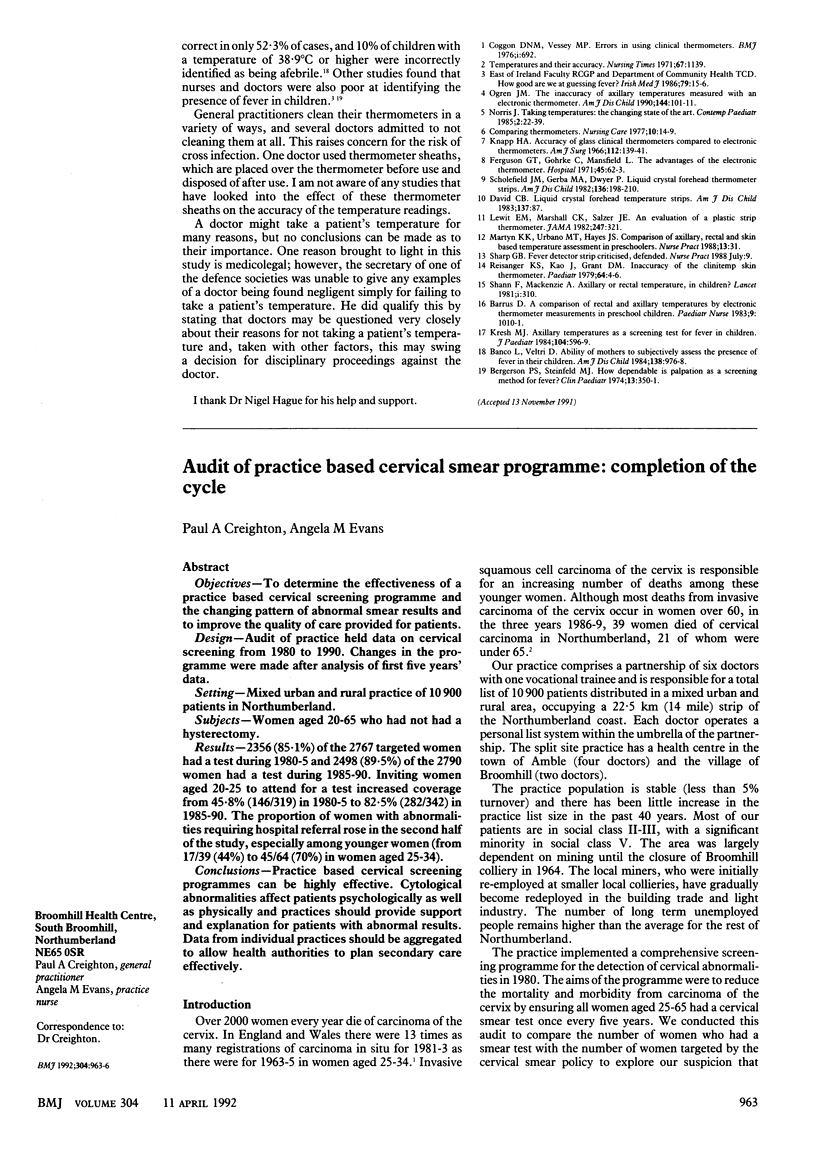Abstract
OBJECTIVE--To identify the attitudes of general practitioners towards the use of thermometers in general practice. DESIGN--Postal questionnaire survey. SETTING--All general practitioners in the catchment area of Frimley Park Hospital, Surrey. SUBJECTS--145 general practitioners. MAIN OUTCOME MEASURES--Answers to questions covering a variety of aspects concerning the use of thermometers in general practice. RESULTS--116 (80%) doctors replied. Seven doctors did not have any method of taking a patient's temperature; up to 12 more doctors did not use their thermometers and 56 doctors used them infrequently, less than once a fortnight. Mercury glass thermometers were most commonly used (80 doctors; 69%), but only 8% of doctors used them correctly. Six doctors failed to clean their thermometers between patients. The study failed to identify the roles of axillary and rectal temperature readings. CONCLUSION--There is a wide variation in attitudes towards the use of thermometers in general practice.
Full text
PDF


Selected References
These references are in PubMed. This may not be the complete list of references from this article.
- Banco L., Veltri D. Ability of mothers to subjectively assess the presence of fever in their children. Am J Dis Child. 1984 Oct;138(10):976–978. doi: 10.1001/archpedi.1984.02140480078024. [DOI] [PubMed] [Google Scholar]
- Bergeson P. S., Stienfeld H. J. How dependable is palpation as a screening method for fever? Can touch substitute for thermometer readings? Clin Pediatr (Phila) 1974 Apr;13(4):350–351. doi: 10.1177/000992287401300416. [DOI] [PubMed] [Google Scholar]
- Coggon D. N., Vessey M. P. Errors in using clinical thermometers. Br Med J. 1976 Mar 20;1(6011):692–692. doi: 10.1136/bmj.1.6011.692. [DOI] [PMC free article] [PubMed] [Google Scholar]
- David C. B. Liquid crystal forehead temperature strips. Am J Dis Child. 1983 Jan;137(1):87–87. doi: 10.1001/archpedi.1983.02140270077025. [DOI] [PubMed] [Google Scholar]
- Ferguson G. T., Gohrke C., Mansfield L. The advantages of the electronic thermometer. Hospitals. 1971 Aug 1;45(15):62–63. [PubMed] [Google Scholar]
- Knapp H. A. Accuracy of glass clinical thermometers compared to electronic thermometers. Am J Surg. 1966 Jul;112(1):139–141. doi: 10.1016/s0002-9610(66)91522-4. [DOI] [PubMed] [Google Scholar]
- Lewit E. M., Marshall C. L., Salzer J. E. An evaluation of a plastic strip thermometer. JAMA. 1982 Jan 15;247(3):321–325. [PubMed] [Google Scholar]
- Martyn K. K., Urbano M. T., Hayes J. S., von Windeguth B., Sherrin T. Comparison of axillary, rectal and skin-based temperature assessment in preschoolers. Nurse Pract. 1988 Apr;13(4):31–36. [PubMed] [Google Scholar]
- Reisinger K. S., Kao J., Grant D. M. Inaccuracy of the Clinitemp skin thermometer. Pediatrics. 1979 Jul;64(1):4–6. [PubMed] [Google Scholar]
- Scholefield J. M., Gerber M. A., Dwyer P. Liquid crystal forehead temperature strips. A clinical appraisal. Am J Dis Child. 1982 Mar;136(3):198–201. doi: 10.1001/archpedi.1982.03970390012002. [DOI] [PubMed] [Google Scholar]
- Shann F., Mackenzie A. Axillary or rectal temperatures in children. Lancet. 1981 Aug 8;2(8241):310–310. doi: 10.1016/s0140-6736(81)90563-8. [DOI] [PubMed] [Google Scholar]


